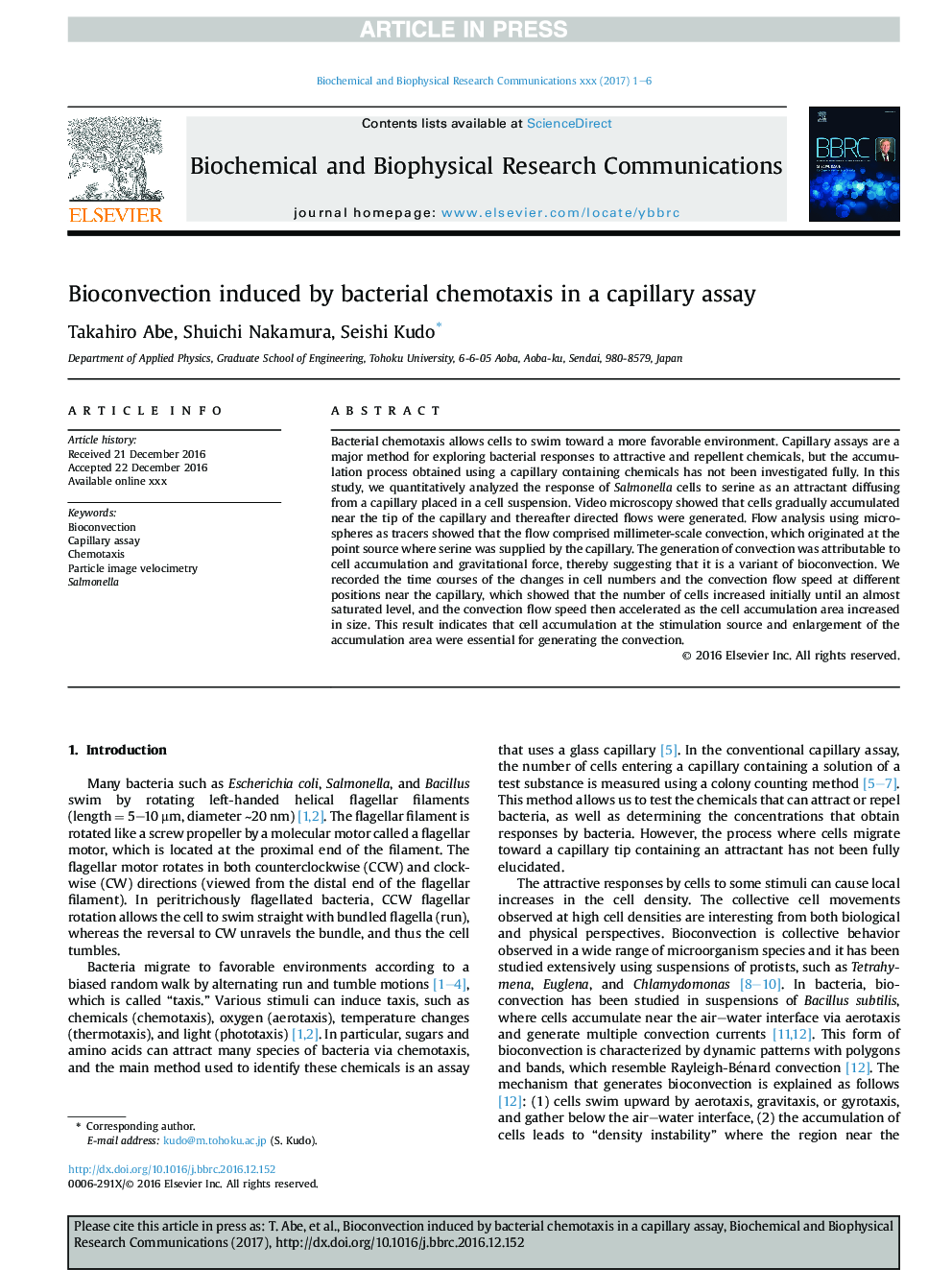| Article ID | Journal | Published Year | Pages | File Type |
|---|---|---|---|---|
| 5505589 | Biochemical and Biophysical Research Communications | 2017 | 6 Pages |
Abstract
Bacterial chemotaxis allows cells to swim toward a more favorable environment. Capillary assays are a major method for exploring bacterial responses to attractive and repellent chemicals, but the accumulation process obtained using a capillary containing chemicals has not been investigated fully. In this study, we quantitatively analyzed the response of Salmonella cells to serine as an attractant diffusing from a capillary placed in a cell suspension. Video microscopy showed that cells gradually accumulated near the tip of the capillary and thereafter directed flows were generated. Flow analysis using microspheres as tracers showed that the flow comprised millimeter-scale convection, which originated at the point source where serine was supplied by the capillary. The generation of convection was attributable to cell accumulation and gravitational force, thereby suggesting that it is a variant of bioconvection. We recorded the time courses of the changes in cell numbers and the convection flow speed at different positions near the capillary, which showed that the number of cells increased initially until an almost saturated level, and the convection flow speed then accelerated as the cell accumulation area increased in size. This result indicates that cell accumulation at the stimulation source and enlargement of the accumulation area were essential for generating the convection.
Related Topics
Life Sciences
Biochemistry, Genetics and Molecular Biology
Biochemistry
Authors
Takahiro Abe, Shuichi Nakamura, Seishi Kudo,
